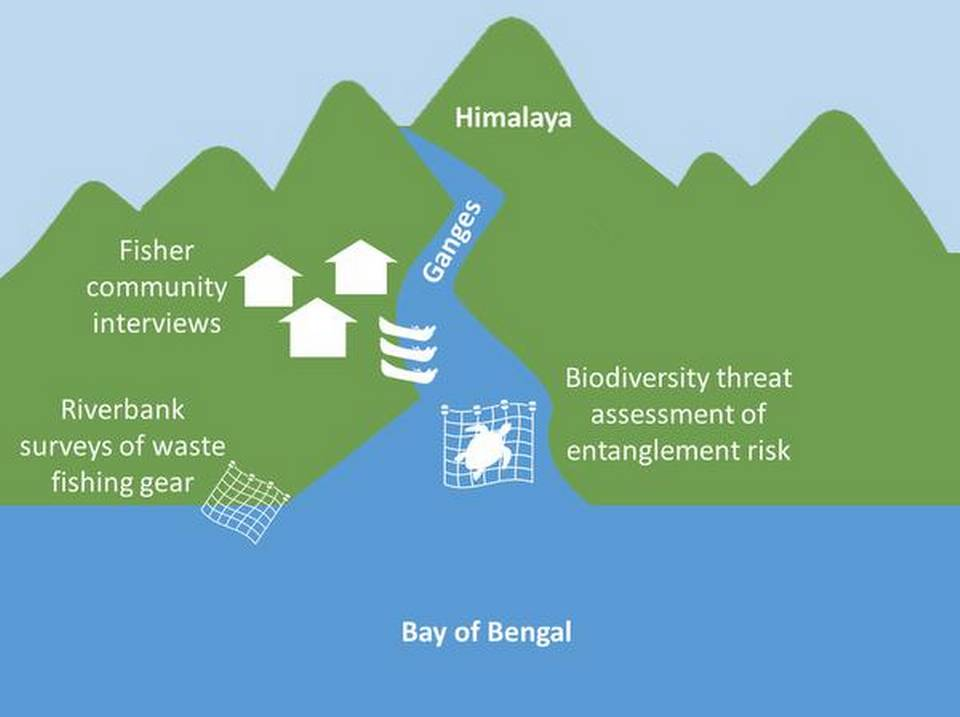Plastic pollution from fishing nets threatening Ganges wildlife: study
Wildlife Institute of India
- Established in 1982 and stationed at Dehradun, Wildlife Institute of India (WII) is an internationally acclaimed Institution, which offers training programs, academic courses and advisory in wildlife research and management.
- It is an Autonomous Institution of the Ministry of Environment, Forest and Climate Change.
Why in the news?
- A group of scientists from international team including people from Wildlife Institute of India has published a paper in Science of The Total Environment, regarding their study of Plastic Pollution from discarded fishing gear in the River Ganga.
- They did research along the river length from Himalayas to its delta reaching Bay of Bengal.
- The researchers used a list of 21 river species of “conservation concern” to assess the effect of fishing gear pollution.

Findings of the paper
- The waste from the fishing gear is largely found near to the sea.
- High rates of fishing equipment are being discarded by fishermen in the river due to short gear lifespans and lack of appropriate disposal systems.
- Major threat after the assessment focussed is found to be entanglement, which is known to injure and kill a wide range of marine species.
What are the possible solutions?
- There is a lack of recycling systems for the used nets. People’s misconception that the rivers cleans itself and further dispose of used nets should be eradicated through public awareness programs.
- Nylon 6 can be extracted from these used nets to reuse them back in carpets and clothing to give way for circular economy of waste management.
References:
Subscribe
Login
0 Comments
